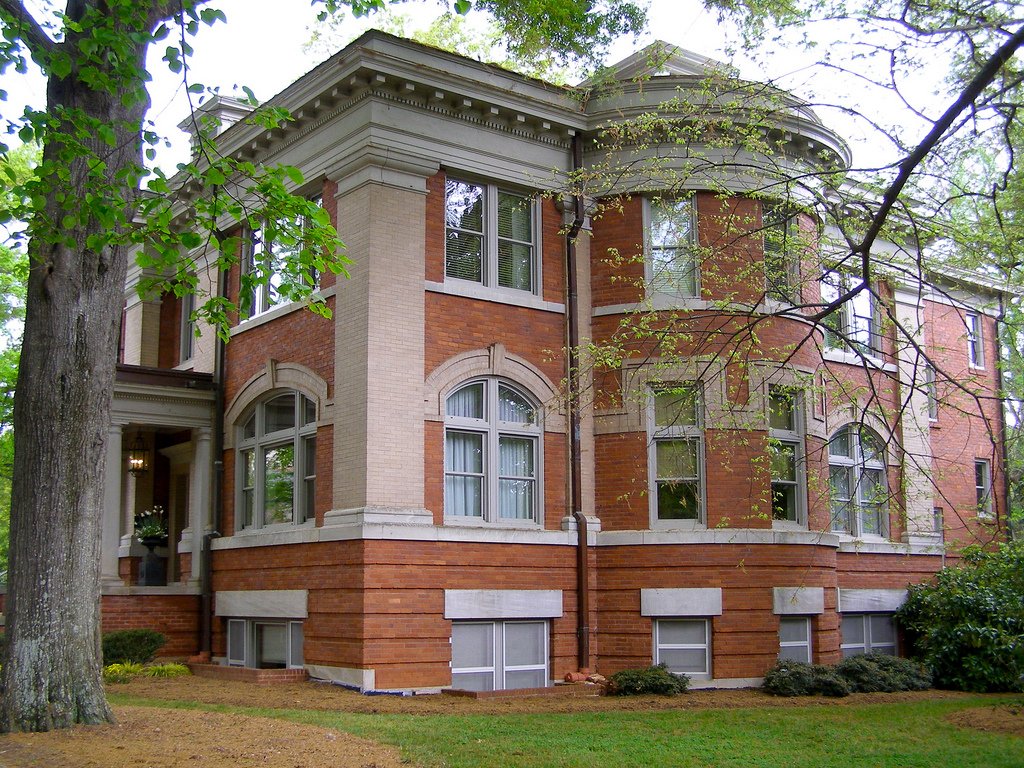#6681. Elegant Two-Tone Brick Façade with Classical Elements
Before us stands a magnificent example of historical brick architecture, likely dating from the late 19th to early 20th century. The building demonstrates an elegant combination of classical style with certain neoclassical elements.
The façade features exquisite two-tone brickwork — the main red-brick tone harmoniously contrasts with lighter elements made of what appears to be sandstone or limestone. Particularly expressive are the arched windows on the first floor with their characteristic semicircular tops and light-colored accent framing.
The building boasts an impressive cornice with decorative brackets (modillions), giving the upper part of the façade special expressiveness and completeness. The basement level is executed in a rougher texture, creating a visually solid foundation for the entire structure.
Notable is the asymmetrical placement of the entrance group with a small portico, which brings dynamism to the overall composition. The façade is enriched by a rhythmic alternation of window openings of various shapes — from rectangular on the upper floor to semi-circular on the lower level. This creates an interesting play of geometric forms, emphasized by contrasting trim details.
The surrounding landscape with mature trees perfectly frames the building, highlighting its historical value and organic connection with the natural environment.
